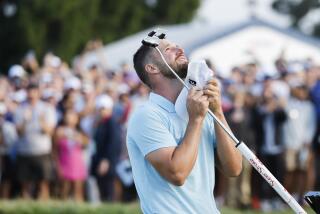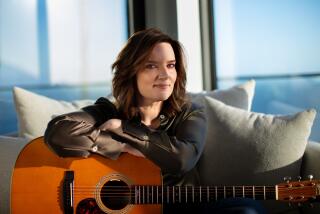Widow Wishes They Had Talked More
- Share via
SALT LAKE CITY — For 112 days, as a plastic heart pumped in his chest, Barney Clark and his wife were a picture of pioneer determination. Or, as one doctor put it, they were like “two rugged old Rocky Mountain sage brushes.”
Through all the pain and discomfort of being the world’s first recipient of a permanent artificial heart, Clark and his wife, Una Loy, had only one other commodity.
Time.
Time to talk. Time to review their 39 years together.
Ten years after the implant, Loy says it wasn’t time enough.
“I thought we had to be geared to the experiment,” she said. “We were trying to keep up a brave front. I regret that we weren’t more personal about it, and talked in the sense of our own lives.”
Clark, a Seattle-area dentist, was 61 and dying of heart disease when he volunteered to become a test case for Utah physicians and scientists who wanted to implant the Jarvik-7 in a human being.
His own life extended by medical science, Clark felt he had a debt to repay, Loy said in an interview from her home in the Seattle suburb Des Moines.
“He said he would not be pleased with himself, or happy, if he didn’t do it,” she said.
While Clark was tethered to the machine that powered the air-driven heart, Loy lived in the University of Utah Hospital. She rarely went out.
Crisis followed crisis. There were more operations to fix the device and solve problems like tiny air leaks in Clark’s lungs and persistent nosebleeds.
After his death on March 23, 1983, a nurse told Loy that during one of her rare absences, the nurse noticed a tear on Clark’s cheek.
Loy said the nurse had taken his hand and said, “It’s tough, isn’t it, Barney?” and he replied, “You’d better believe it, kid.”
“I wish I’d known that,” said Loy, weeping quietly.
Critics of the experiment complained about the cost and ethics of chaining a human being to a piece of machinery. Loy was not immune to such doubts but in the end “I was satisfied, and I think he was, too,” she said.
Physicians and Loy gathered for a “celebration of life” Wednesday, 10 years to the day after Clark’s heart was replaced with a plastic pump.
Participants said the courage of Clark and Loy helped surgeons and scientists develop live-saving techniques in use today.
Dr. William DeVries, the principal surgeon, was unable to attend because he was caring for a patient in Louisville, Ky., said Don Olsen, head of the school’s artificial heart program. DeVries now lives in Kentucky.
For five years after Clark’s death, Loy worked with the American Heart Assn. A collaboration on a book failed to materialize, so she created a family scrapbook. Her 16-year-old grandson has promised that one day he’ll write his grandfather’s story.
About 18 months ago, she married Glen L. Farrer, the widower of her sister.
More to Read
Sign up for Essential California
The most important California stories and recommendations in your inbox every morning.
You may occasionally receive promotional content from the Los Angeles Times.













